Welcome to the world of plumbing! Whether you’re a seasoned pro or a DIY enthusiast, you’ve likely come across the terms “Plumbers Putty” and “Teflon Tape” when working on a plumbing project.
These two products may seem similar at first glance, but they actually have very different uses and functions.
Plumber’s putty and Teflon tape are both commonly used in plumbing projects but have different functions and uses. Plumber’s putty is a type of putty that is used to create a watertight seal around sinks, drains, and other fixtures.
It is made from a mixture of clay, talc, and other materials and is often used to seal the area around the base of a sink or drain. Teflon tape, on the other hand, is a thin, plastic tape that is used to seal pipe threads.
It is often used to seal the connections between pipes and fittings and can help prevent leaks. Plumber’s putty is typically used to seal a one-time installation, and Teflon tape is used to seal a re-assembling pipe fitting.
Here Is The Short Answer:
Whenever there is a direct, unrestricted, or under-pressure water or gas supply, pipe dope is used to seal the threads.
Under the sink’s drain basket flange or by the edges of some faucets above the counter or sink surface, the plumber’s putty prevents water from entering between mating surfaces.
Some fittings sometimes seal these mating surfaces with rubber gaskets instead of putty. Whenever it comes to fittings, plumbers’ putty should not be applied directly to the threads.
These two functions serve completely different purposes. You can fill small gaps under the faucet with a plumber’s putty. Teflon tape or liquid is used to seal it whenever there is no o-ring or washer on a threaded connection.
Plumbers Putty Vs. Teflon Tape
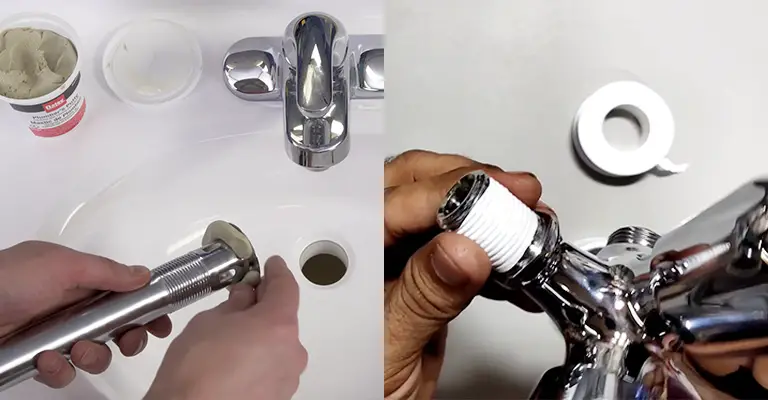
Teflon tape and plumber’s putty work well together but cannot be substituted for each other. Plumbers tape and thread-seal tape are also called Teflon tape and are used to seal threaded pipe joints to ensure reliable sealing of liquids and gasses.
Plumbers putty acts as a flexible caulk when water resistance is needed. However, it cannot withstand significant pressure. Unlike Teflon tape, a plumber’s putty does not adhere to pipe threads.
What You Need To Know About Plumber’s Putty
There are several types of plumber’s putty, each with its own ingredients. While they are all water-repellent and keep their softness and flexibility for a long time, they do not deteriorate over time.
They are ideal for applications requiring a reversible water-resistant seal, but only when the seal will not be under pressure, as the putty still remains soft, so it would wash or blow away under pressure.
A typical application for plumber’s putty in domestic plumbing is to seal the base of a faucet against the sink’s surface and to seal between the rim and the sink for basket drains.
Common Uses Of Plumbers Putty
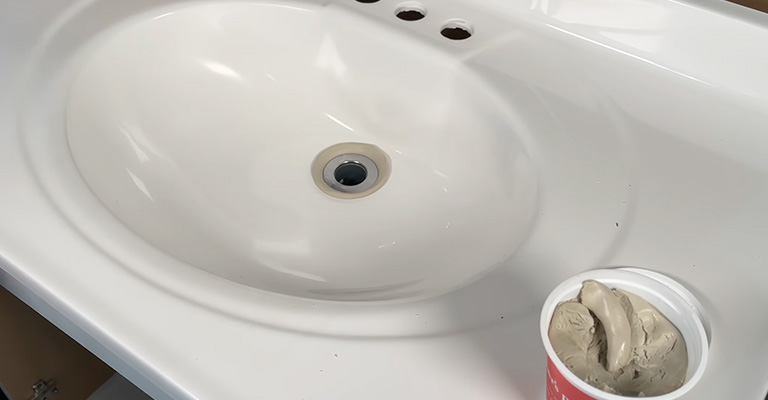
Most plumbing projects require plumbers’ putty, and you can be sure it serves various purposes. Sealants like this can be used for a variety of purposes, such as:
Securing Drains
Furthermore, using plumbers’ putty can create a watertight barrier when installing shower drains. For sinks or bathtubs, just apply the putty underneath your drain to secure it.
Attaching Kitchen Sinks
You use a plumber’s putty whenever you want to attach your kitchen sink to the countertop. Solid seals are created with the sealant.
Before fitting your sink into the countertop, you will only need to use putty around the edge of the sink and the base.
Fitting Faucets
One of the most common uses of this product is to prevent leaks in plumbing fittings, especially those used to install faucets. Make a watertight seal around the base of your faucet by applying the putty.
The Use Of Plumber’s Putty
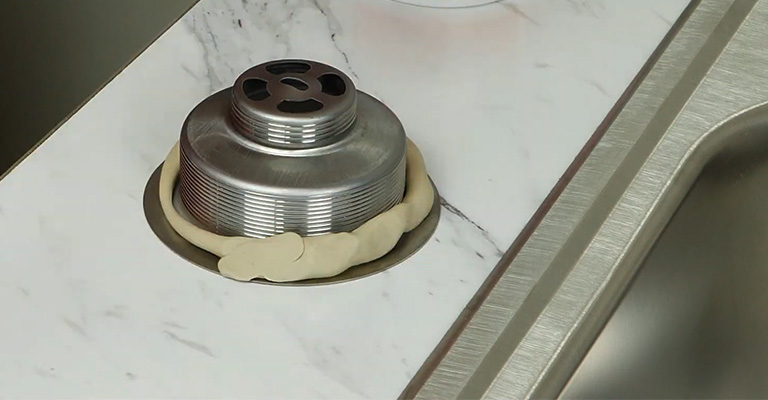
Place a generous amount of putty in the sink drain hole after running a generous bead of putty around the drain’s rim.
Wipe a damp cloth on the drain after tightening it from underneath, and then remove any excess putty.
If you’re using a faucet, run a thick bead of putty around the base before positioning it. The excess putty should be wiped off after you tighten down the faucet.
When Should You Not Use Plumbers Putty?
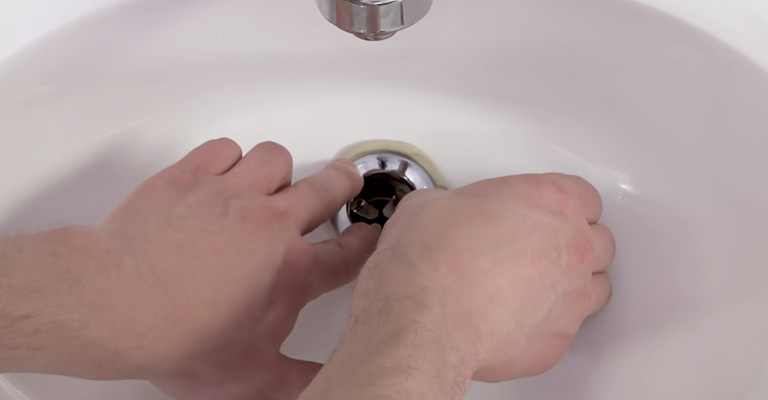
Even though plumbers’ putty is a handy plumbing compound, there are certain instances where it shouldn’t be used. Among them are:
Sealing A Toilet To The Floor
If you want to fix your toilet to the floor, you may not use this plumbing sealant. Putty is not designed to support the weight of a toilet, so it cannot support it.
Underwater Applications
A putty formula prevents water from seeping through various plumbing fixtures. The bonding does not take place underwater, however. As such, it shouldn’t be used to seal underwater projects.
Sealing Fittings Made Of Different Materials
In cases where one plumbing joint is metal and the other is plastic, the plumber’s putty will not work. Certain materials cannot be sealed with this sealant.
When A Stronger Adhesive Sealant Is Needed
In addition to being non-adhesive, plumbers’ putty has no adhesives. As a result, it has no adhesive properties. It shouldn’t be used on projects requiring a high degree of waterproofing.
Countertops Made Of Porous Materials
Do not use plumber’s putty on porous materials like granite, sandstone, quartz, or marble countertops. Due to the oil base, regular putty will only stain your countertops. The good news is that you could use putty that does not stain.
Applications Involving PVC Or ABS Plastic
To keep plumbers’ putty soft, most of them contain petroleum compounds. There is a well-known problem with petroleum interfering with the chemical structure of plastics. It is, therefore, common for PVC fittings to degrade or deteriorate due to this.
Pressurized Connections
A very long time is expected for this plumbing sealant to remain soft. In such a case, it will not be able to bear high pressure.
What You Need To Know About Teflon Tape
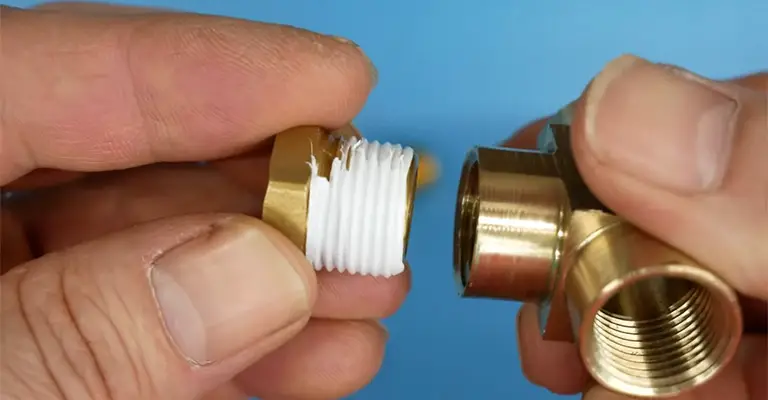
Polytetrafluoroethylene tape (PTFE) is a thin film that seals threaded pipe joints and works as a sealant. There are different types and densities of PTFE tapes; some are color-coded for various purposes.
You can find white tape in any hardware or DIY store suited for water supply pipes up to 3/8 inch in diameter. Gas lines need yellow tape, which is twice as dense as white tape.
The red tape is used on larger pipes, measuring from 1/2 inch to 2 inches in diameter. Copper acts more as a lubricant than as a sealant, and green tape is used on oxygen and medical gas lines.
What Is Teflon Tape Used For?
Liquids and even gases are prevented from leaking with Teflon tape. It is possible to use Teflon tape for many different things based on the type you choose, such as:
Lubricating Connections
Besides making lubrication and seals, Teflon tape is also used daily as a sealant. As a result of its low friction properties, it is very effective.
Taping Stainless Steel Threads
Taping up stainless steel threads with gray Teflon tape is also an option. High-density tapes are more resistant to premature wear because they have a higher density than standard tapes.
Oxygen Lines Applications
It is recommended to seal oxygen lines with Teflon tape. Due to its grease-free properties and non-flammability, this tape offers a tight seal.
Fitting Gas Lines
Sealing all gas lines, including natural gas, butane, and propane, with Teflon tape is another use for Teflon tape. However, you can only use yellow thread seal tape in this case.
Sealing Water Systems
If you want to seal water lines, you can use pink Teflon tape. There is a difference between this type of Teflon tape and white tape in terms of its durability. As a result, liquids and gases tend to be held together more securely via threaded pipe joints.
Basic Plumbing Jobs
This is the most common type of Teflon tape and is best suited to routine plumbing jobs around the house. The seal must cover all outdoor fixtures, including the kitchen, bathroom, and other indoor fixtures.
Using Teflon Tape
The tape should be wrapped around the PTFE tape clockwise, overlapping each turn by about half until you reach the end of the thread.
Conforming the thin film to the threads’ contours will be easy. You need to tighten the seal on the other side of the joint, so it’s completely pressure resistant.
When Should You Not Use Teflon Tape?
In the wrong applications, Teflon tape could create leaks. The following situations may not allow you to use thread seal tape.
Making Pex-Type Connections
To ensure that Pex connections are watertight, crimping tools are used. This type of connection should not be done with Teflon tape.
Connecting Plastic Fittings
The best use of Teflon tape is for metal fittings and pipes rather than plastic fittings. It would be better to use adhesives like pipe dope instead. In addition, compression fittings cannot be sealed with tape.
Sealing Solvent Weld Type Joints
The joints on waste pipes are commonly found in this type. Sealing solvent weld joints cannot be done with Teflon tape, however. Due to the tape’s recommendation to only be used on threaded joints, it is only recommended for use on threaded joints.
Connecting Fittings With Female Thread
Using Teflon tape to connect PVC fittings with female threads is not a good idea. In this case, the tape might cause a wedging motion, which would result in substantial stress on the joints of the pipe.
Which Is Better? Plumbers Putty Or Teflon Tape?
The purpose of Teflon tape and plumber’s putty is different, so you should never have to choose between the two.
Using Teflon tape or plumber’s putty is unnecessary, as there are alternatives. Plumbers don’t always prefer tape; some use a liquid pipe compound (also called “pipe dope”).
The use of plumber’s putty may be undesirable in some instances, such as when caulking granite, because it might cause stains.
Final Words
Plumbers’ putty or Teflon tape must be used for plumbing connections, whether they are professional or DIY. Using Plumbers’ putty is necessary when installing drains, faucets, basket colanders, and other sink fixtures.
Teflon tape must be used to seal threaded pipe joints when you’re sealing plumbing fittings. Despite this, there are instances in which both putty and tape shouldn’t be used.
There are also other differences between these sealants besides their application. As an example, Teflon tape can act as a sealant and lubricant, while plumbers’ putty can only act as a sealant.







